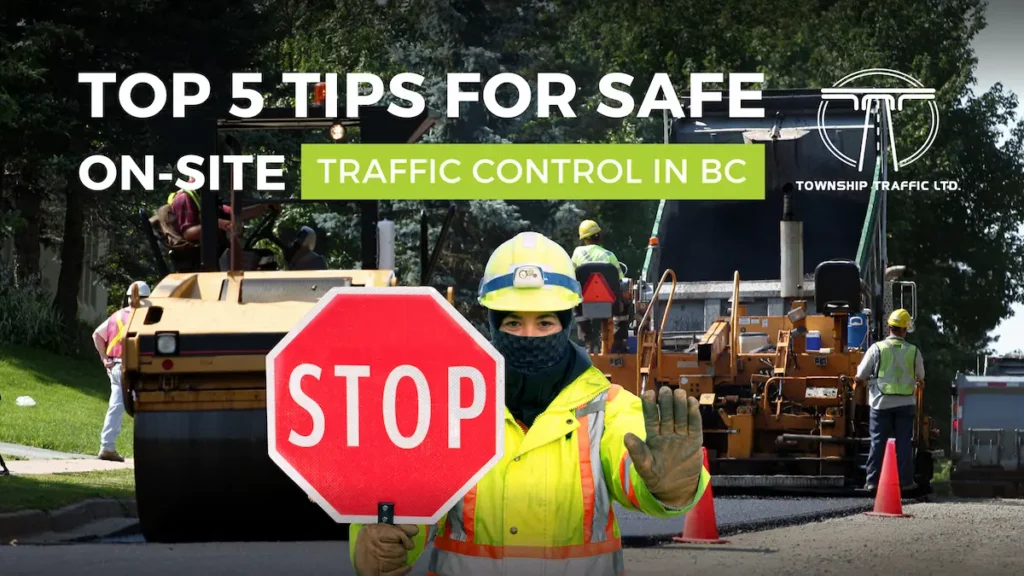How can you keep both workers and the public safe during active construction and infrastructure projects in BC?
With constant movement of vehicles, equipment, and personnel, on-site traffic control becomes not just important, but essential. Whether it’s a high-traffic construction zone in Vancouver or a large-scale infrastructure development in the Fraser Valley, effective traffic management plays a crucial role in minimizing risk and maintaining compliance.
At Township Traffic, we provide certified and reliable traffic control services across British Columbia, helping contractors and municipalities manage road safety with confidence. Backed by years of hands-on experience, here are our top five tips for safe and effective on-site traffic control in BC.
1. Always Use Certified Traffic Control Personnel
In British Columbia, using BCCSA-certified traffic control persons (TCPs) isn’t just a best practice—it’s the law. Certified TCPs are trained to manage traffic flow, reduce risk, and respond quickly to unexpected situations.
At Township Traffic, all our team members are professionally trained and certified, ensuring compliance with WorkSafeBC standards and industry regulations.
2. Develop a Site-Specific Traffic Management Plan
Every project site is unique. Whether you’re working on a highway, residential street, or event site, a custom traffic management plan (TMP) is essential. A TMP outlines:
- Signage placement
- Lane closures or detours
- Pedestrian pathways
- Emergency procedures
Our experts at Township Traffic collaborate with project managers and engineers to develop effective, site-specific Traffic Management Plans (TMPs) that ensure smooth operations and maximum safety.
3. Use Proper Signage and Equipment
Visible, well-placed signage is one of the most effective tools in traffic control. This includes:
- Warning signs
- Cones and delineators
- Arrow boards
- Portable traffic signals
We maintain a large inventory of modern traffic control equipment that meets BC Ministry of Transportation guidelines. Proper setup reduces confusion and keeps vehicles and pedestrians moving safely.
4. Maintain Clear Communication at All Times
Communication between workers, traffic controllers, and motorists is key. Two-way radios, hand signals, and proper signage all play a role in avoiding confusion.
At Township Traffic, our teams are trained in real-time communication techniques, which help coordinate vehicle movements and worker activities, especially in high-risk or fast-changing environments.
5. Monitor and Adapt to Changing Site Conditions
Construction sites evolve daily. Weather changes, equipment movement, or an increase in traffic volume can all create new hazards. A strong traffic control team must be prepared to adapt quickly.
Our dispatch system at Township Traffic operates 24/7, enabling us to adjust staff and resources as conditions change, ensuring continuous protection for both workers and commuters.
Conclusion
In the fast-paced world of construction and infrastructure development, on-site traffic control isn’t optional—it’s essential. It protects lives, keeps projects on schedule, and ensures compliance with BC’s strict safety standards. By investing in certified professionals, using the right equipment, and staying flexible to changing site needs, you lay the groundwork for a secure, efficient work environment.
At Township Traffic, we believe that every project—no matter the size—deserves thoughtful planning and expert traffic management. With our experienced team and commitment to safety, we’re proud to help build BC, one safe worksite at a time.









